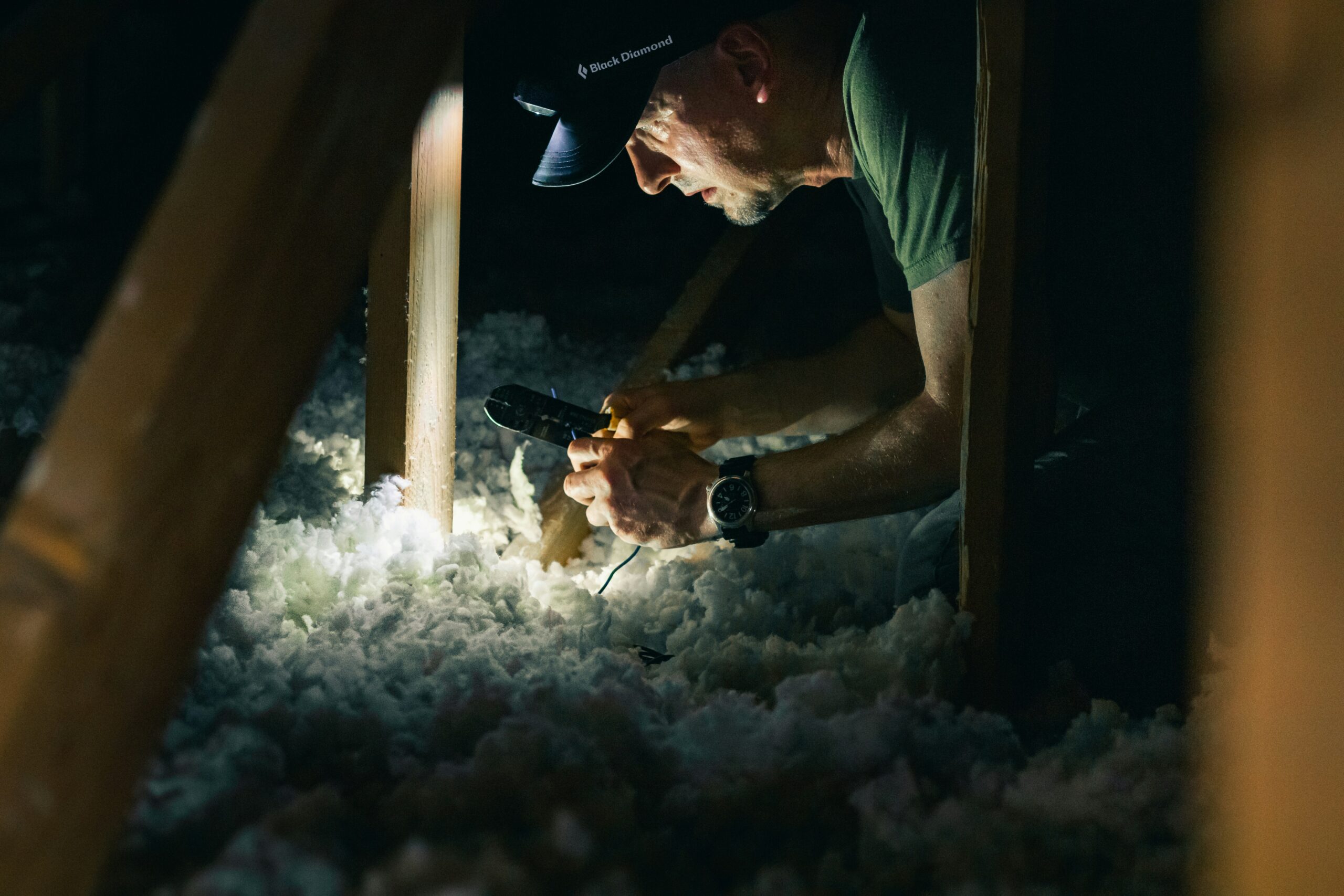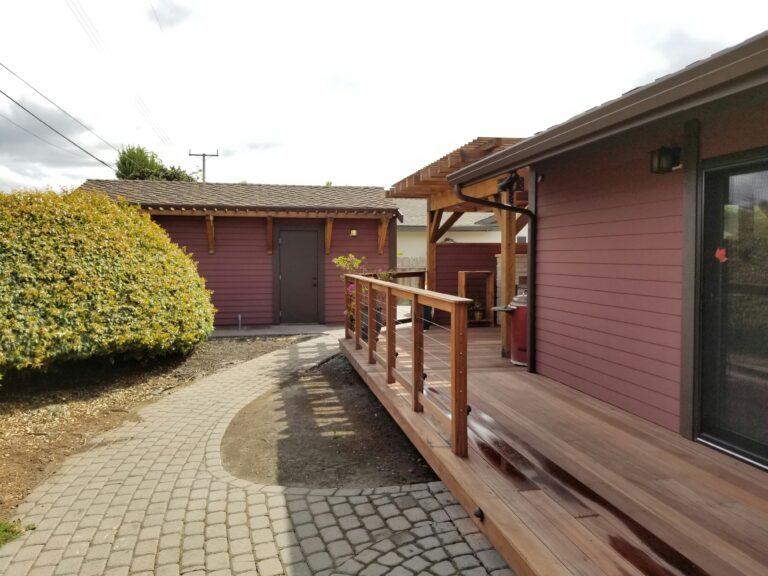Signs Your Home Has Poor Insulation (and How to Fix It)
When it comes to home maintenance, insulation often doesn’t get the attention it deserves—until you start noticing drafts, high utility bills, or inconsistent room temperatures.
Poor insulation can quietly drain your wallet and make your home uncomfortable year-round.
Understanding the signs and solutions can help you improve comfort, save on energy, and protect your home’s structure from moisture and temperature damage.
Why Insulation Matters for Home Maintenance
Insulation is one of the unsung heroes of home maintenance. It serves as your home’s thermal barrier, keeping warm air in during the winter and hot air out during the summer. When insulation isn’t doing its job, you’ll notice a decline in comfort and an increase in energy use.
Proper insulation also reduces strain on your HVAC system, lowers noise levels, and helps maintain consistent humidity levels.
Common Signs of Poor Home Insulation
If you suspect your home has insulation issues, here are the most common red flags to look out for:
1. Uneven Room Temperatures
Do some rooms in your home feel much colder or hotter than others? Inconsistent temperatures are a clear indicator of insufficient or uneven insulation. Areas like attics, crawl spaces, and exterior walls are common culprits.
2. High Energy Bills
One of the easiest ways to spot poor insulation is through your utility bills. If your heating or cooling costs keep rising without any change in usage, your home is likely losing energy through poorly insulated areas.
3. Drafts and Cold Spots
Feeling a sudden chill near windows, doors, or along baseboards? Drafts indicate air leaks that can compromise insulation effectiveness. Over time, this can lead to uneven heating and cooling throughout your home.
4. Ice Dams on the Roof
In colder climates, uneven roof temperatures caused by escaping warm air can lead to ice dams—thick ridges of ice that prevent proper drainage and may cause roof leaks. This is often due to poor attic insulation or ventilation.

5. Cold Floors or Walls
If your floors feel icy in winter or your walls are cold to the touch, that’s a strong sign of inadequate insulation. Well-insulated surfaces should remain close to your home’s interior temperature.
6. Frequent HVAC Use
When your HVAC system seems to be running constantly to maintain a comfortable temperature, it’s compensating for heat loss or gain caused by poor insulation.
7. Noise Pollution
Insulation doesn’t just regulate temperature—it also acts as a sound barrier. If you notice more outdoor noise than usual, your insulation may be thin or deteriorated.
How to Diagnose Insulation Problems
Before investing in repairs, it’s important to confirm whether poor insulation is truly the problem. Here are a few effective ways to diagnose it:
- Conduct a Home Energy Audit: Many utility companies offer free or discounted energy audits. These assessments use thermal imaging to pinpoint areas where heat escapes.
- Inspect Your Attic and Crawl Spaces: Check for thin or deteriorated insulation materials. Fiberglass insulation should appear fluffy and evenly distributed.
- Look for Gaps or Compressed Areas: Gaps around ducts, vents, and wiring can allow air to leak and reduce insulation performance.
- Check the R-Value: The R-value measures insulation’s ability to resist heat flow. Compare your home’s R-value to local recommendations from the Department of Energy.
How to Fix Poor Insulation: Practical Home Maintenance Solutions
Once you’ve identified problem areas, there are several ways to improve your home’s insulation. The right solution depends on your home’s age, layout, and climate.
1. Seal Air Leaks
Start by sealing cracks, gaps, and holes in your home’s envelope—especially around doors, windows, and electrical outlets. Use weatherstripping, expanding foam, or caulk to close these air leaks before adding new insulation.
2. Upgrade Attic Insulation
The attic is one of the most cost-effective places to add insulation. Common options include:
- Fiberglass batts: Easy to install and affordable.
- Blown-in cellulose: Great for filling uneven spaces and improving coverage.
- Spray foam insulation: Offers superior sealing properties for long-term energy savings.

3. Insulate Walls and Floors
Older homes often lack insulation in walls and floors. Adding insulation in these areas can dramatically improve comfort and energy efficiency. Options include blown-in cellulose or foam insulation for walls, and rigid foam boards for floors or basements.
4. Improve Windows and Doors
Windows and doors are major sources of heat loss. Consider upgrading to energy-efficient, double-pane windows or adding storm windows. Weatherstripping and thermal curtains also make a noticeable difference.
5. Add Basement or Crawl Space Insulation
Basements and crawl spaces are often overlooked. Insulating these areas can prevent cold floors, moisture buildup, and energy loss. Use rigid foam or spray foam insulation for moisture-prone spaces.
Additional Tips for Long-Term Home Maintenance
To make the most of your insulation improvements, consider these ongoing maintenance habits:
- Schedule seasonal inspections: Check insulation, vents, and seals at least once a year.
- Keep attic ventilation clear: Good airflow prevents moisture and heat buildup.
- Monitor humidity levels: Excess moisture can reduce insulation performance and cause mold growth.
- Maintain HVAC systems: Clean filters and ducts regularly to ensure your system isn’t overworking due to heat loss.
When to Call a Professional
While some insulation upgrades can be DIY projects, others are best left to professionals—especially when dealing with spray foam, complex wall cavities, or older homes with outdated materials. A certified insulation contractor can evaluate your home, recommend materials, and ensure installation meets building codes and safety standards.
Energy Savings and Return on Investment
Upgrading insulation isn’t just about comfort—it’s an investment in your home’s future. The U.S. Department of Energy estimates that homeowners can save up to 15% on heating and cooling costs by sealing air leaks and adding insulation in key areas.
Better insulation also boosts your home’s resale value, as energy efficiency becomes a top priority for modern buyers.
Stay Proactive with Your Home Maintenance
Spotting and fixing insulation issues early is one of the smartest home maintenance decisions you can make. From reducing your energy bills to keeping your home consistently comfortable, proper insulation pays off year after year. If you’ve noticed any of the signs above—drafts, uneven temperatures, or rising costs—it might be time for an insulation upgrade.
Ready to make your home more energy-efficient? Schedule an energy audit or consult an insulation specialist to get started. A well-insulated home doesn’t just feel better—it performs better, too.







